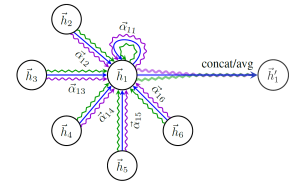Introduction
Recommender systems have become an integral part of our daily lives, whether it be for online shopping, music streaming, or social media recommendations. These systems use a combination of data mining, machine learning, and artificial intelligence to predict user preferences and make personalized recommendations. However, as the amount of data available to these systems continues to increase, traditional methods of recommendation have proven to be inadequate. Enter Graph Neural Networks (GNNs), a new approach to recommendation systems that has the potential to revolutionize the field.
Background
Recommender systems have traditionally used techniques such as collaborative filtering, content-based filtering, and hybrid methods to make recommendations. Collaborative filtering is based on the idea that users who have similar preferences in the past will have similar preferences in the future. Content-based filtering, on the other hand, uses the characteristics of the items to make recommendations, rather than the preferences of the users. Hybrid methods combine these two approaches to make recommendations. However, these methods have several limitations, such as the difficulty in handling large-scale data and the lack of personalized recommendations.
Graph Neural Networks in Recommender Systems
GNNs, also known as graph convolutional networks, are a powerful tool for recommendation systems. GNNs are a type of neural network that can process graph-structured data, such as social networks or recommendation systems. In a recommendation system, the users and items are represented as nodes in a graph, and the edges between the nodes represent the relationships between the users and items. GNNs use the graph structure to learn representations of the nodes and make personalized recommendations.
GNNs have several advantages over traditional methods of recommendation. First, GNNs can handle large-scale data by using a graph structure to model the relationships between users and items. Second, GNNs can make personalized recommendations by using the graph structure to model the user’s preferences. Third, GNNs can incorporate additional information, such as the context or time, to make recommendations.
Implementing GNNs in Recommender Systems
There are several ways to implement GNNs in recommendation systems. One popular method is to use GNNs to learn representations of the users and items, and then use these representations to make recommendations. Another method is to use GNNs to model the interactions between the users and items and make recommendations based on the interactions.
One example of a GNN-based recommendation system is the Graph Attention Network (GAT) proposed by Velickovic et al. (2018). GAT uses attention mechanisms to model the interactions between the users and items, and make personalized recommendations. The attention mechanism allows the model to focus on the most relevant interactions, resulting in more accurate recommendations.

Conclusion
Graph Neural Networks (GNNs) are a powerful tool for recommendation systems, and have the potential to revolutionize the field. GNNs can handle large-scale data, make personalized recommendations, and incorporate additional information to make recommendations. GNNs are still a relatively new approach to recommendation systems and there is a lot of research ongoing to improve their performance and adapt them to other domains.
In conclusion, GNNs are a promising tool to improve the accuracy and personalization of recommender systems. As the amount of data available to these systems continues to increase, GNNs will play an increasingly important role in providing personalized recommendations to users.
References:
Velickovic, P., Cucurull, G., Casanova, A., Romero, A., Lio, P., & Bengio, Y. (2018). Graph attention networks. arXiv preprint arXiv:1710.10903.
